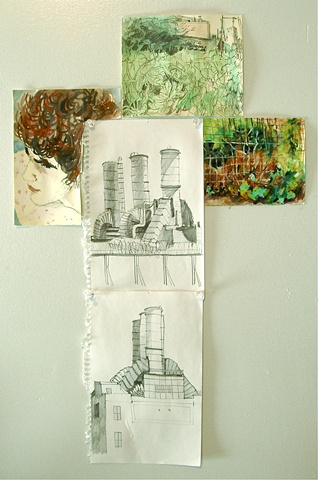drawing
Dirt is full of animals. It is full of all our past -- a dense packing of human history -- and it
grows the future. The churning ground, all of man and history, feeds the living world, and
everything becomes nourishment. I am interested in the fertile idea of this earth-fruit, these earth
riches, this ground-making. We are gobblers in a cycle of organic consumption. Thus our words, our
works, our deeds, our past, are always physically present. Thus our vegetables are made of flesh and
we devour our past. All history of civilization and the evolution of life is physically present in a real
sense, as the matter is recycled, and it exists simultaneously in our minds, as all we can ever see is
the past, at once in the flattened plane of memory.
I have been drawn to the mound form -- representing burial mound, compost pile, and
mythical hill. The simple, pleasing shape comes naturally, while the associations are rich. A mound
is nature as object -- more contained and definable than an amorphous forest or rambling weeds. It is
a collection and treasure chest, full of bones and bugs and gold and legend. It, like the garden,
bridges the man-made and the natural -- is it hill or burial monument? As such it represents the
ambiguous space between object and landscape.
--from the thesis
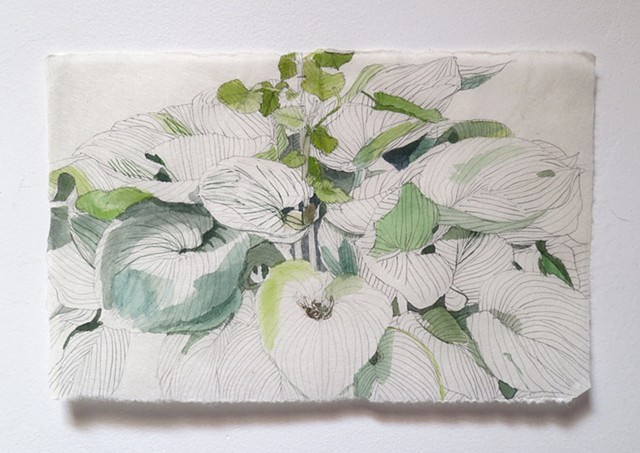
![gouache sketch [detail]](http://img-cache.oppcdn.com/fixed/19036/assets/Z0oNK_3AOe87pNa8.jpg)
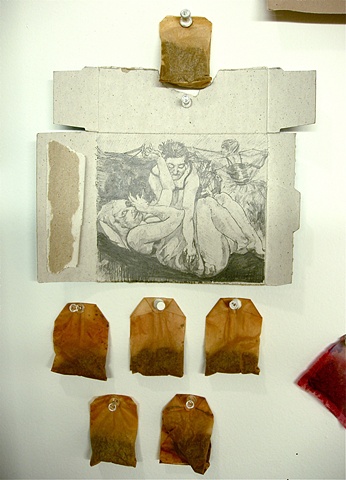
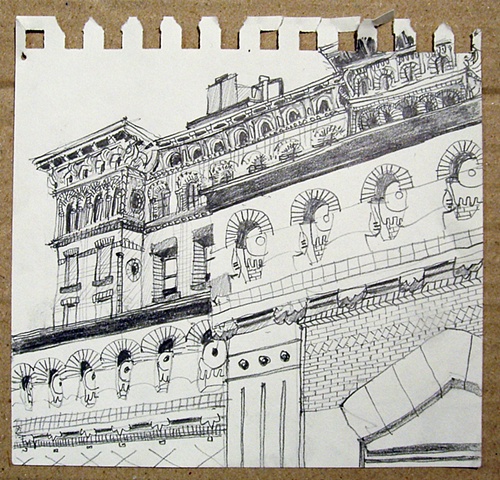
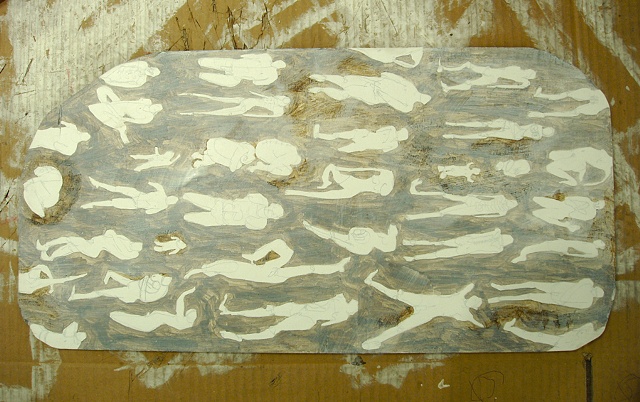
![Buried Test 1 [detail]](http://img-cache.oppcdn.com/fixed/19036/assets/SURPjmn4.jpg)
![Buried Test 1 [detail]](http://img-cache.oppcdn.com/fixed/19036/assets/WbJItPnF.jpg)
![Buried Test 1 [detail, later stage]](http://img-cache.oppcdn.com/fixed/19036/assets/wDaBYL5B.jpg)


